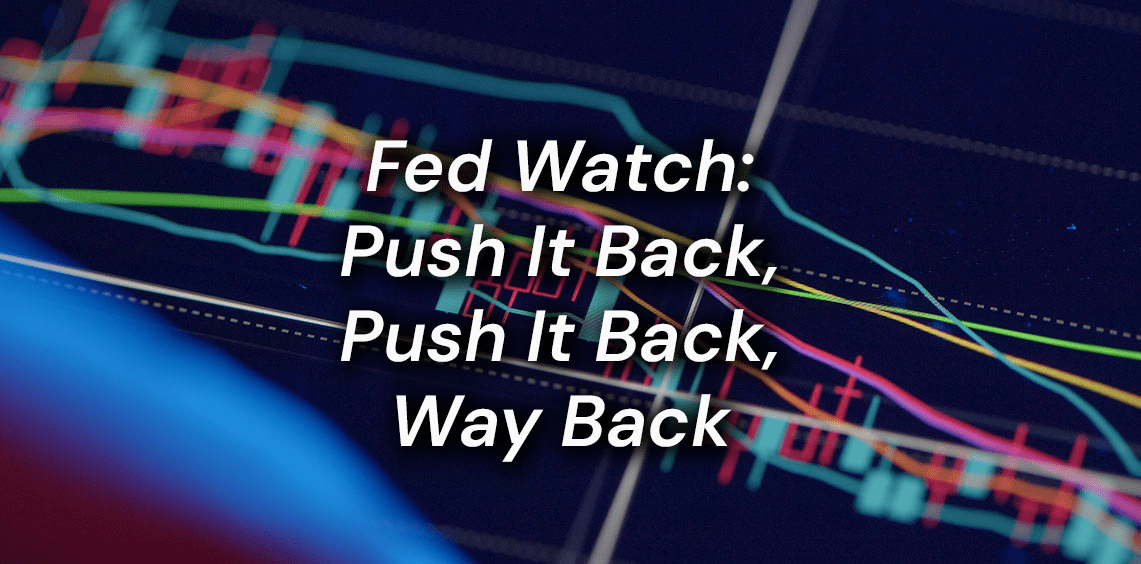The markets performed well last week with nervousness over the banking situation calming down and the VIX volatility gauge breaking below 20 reflecting these lower fears and a relatively good stretch of economic and inflation data.
We’re beginning the second quarter and while there is high uncertainty, estimates for second quarter GDP growth currently are around 1%. The Fed estimate of just 0.4% for the whole year is totally ridiculous unless the Fed plans on engineering a severe recession in the last two quarters of the year.
As I wrote last week, the math from a very positive first quarter GDP (around 3% estimated) and now 1% for the second quarter, implies a sharp slowdown over the second half of the year. Things certainly may take a turn for the worse—as we do not yet have any data reflecting ramifications from the Silicon Valley Bank (SVB) failure. It will take anywhere from 4 to 8 weeks before we start to see economic data showing SVB’s impact. We do get jobless claims on a weekly basis and those are an early read for economic trends. And these jobless claims remain subdued, reflecting strength in the labor markets.
Keep in mind on these jobless claims: our economy has been shifting more to services over the years. And a number of economists believe those jobless claims don’t measure joblessness as well in the service sector as they do in the manufacturing sector. It is thus hard to compare subdued jobless claims today to prior spikes in these weekly jobless claims during recessions.
Nonetheless the lagged data remains resilient and surprisingly strong. This week we will get the employment report from March. Again, it will not yet show any SVB impact and early estimates expect a 200,000 job gain.
If the Federal Reserve estimates GDP growth at 0.4% for the year and negative GDP over the second, third and fourth quarters, it would imply negative payroll growth over the next nine months ahead. I wonder if you asked the Fed today whether they agree with their own forecast, would they agree with this contractionary implication?
The banking system panic seems normalized for now with no more fresh runs. But banks still should increase deposit rates to keep up with what consumers can earn in Treasuries and money markets. We’ve seen money flowing to instruments that capture these higher yields with over $300 billion invested in money market funds over the last three weeks.
Deposit outflow pressures will undoubtedly lead to a tightening of lending standards and is a big negative going forward for the economy. We haven’t seen any significant losses or mark downs from commercial real estate but expected softness is likely to further lead to slowness in the second half of the year.
We should also mention money supply data came out last week and again the M2 money supply has been going down for a year and is currently down 3% year-over-year. Some look at the 40% explosion over the prior two years and think this 3% is not a major decline. But we want M2 growing 5% per year and a 3% drop represents the sharpest decline we’ve seen since the 1930s.
We had the seventh consecutive drop in the Case-Shiller Home Prices Index. And when our team feeds these lower housing prices into an alternative measure of core inflation, we find the fifth consecutive month of negative core inflation readings—which annualizes the last three month trend in our up-to-date housing series.
Summing up: I enter the second quarter with a cautious outlook. I would like to see the Fed recognize the cumulative impact of its tightening and that inflationary pressures are no longer a primary concern. I would go with a pause at the next Fed meeting, but we still have six weeks to go. We will be getting CPI data, employment data, and a lot more anecdotal data on lending and borrowing impacts to gauge the Fed’s likely course.
Past performance is not indicative of future results. You cannot invest in an index.
Professor Jeremy Siegel is a Senior Investment Strategy Advisor to WisdomTree Investments, Inc. and WisdomTree Asset Management, Inc. This material contains the current research and opinions of Professor Siegel, which are subject to change, and should not be considered or interpreted as a recommendation to participate in any particular trading strategy, or deemed to be an offer or sale of any investment product and it should not be relied on as such. The user of this information assumes the entire risk of any use made of the information provided herein. Unless expressly stated otherwise the opinions, interpretations or findings expressed herein do not necessarily represent the views of WisdomTree or any of its affiliates.






